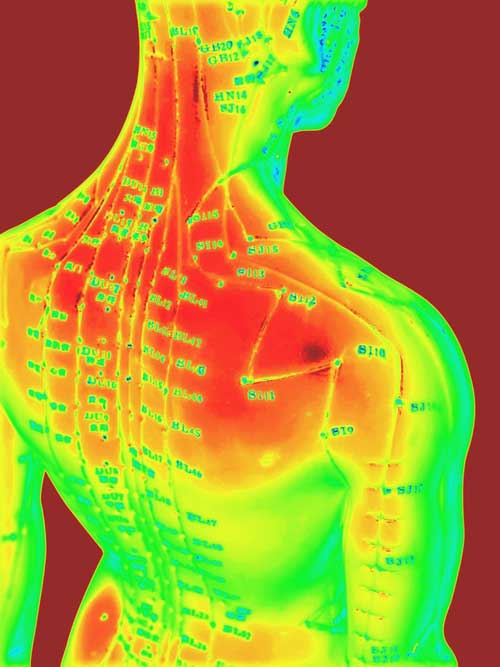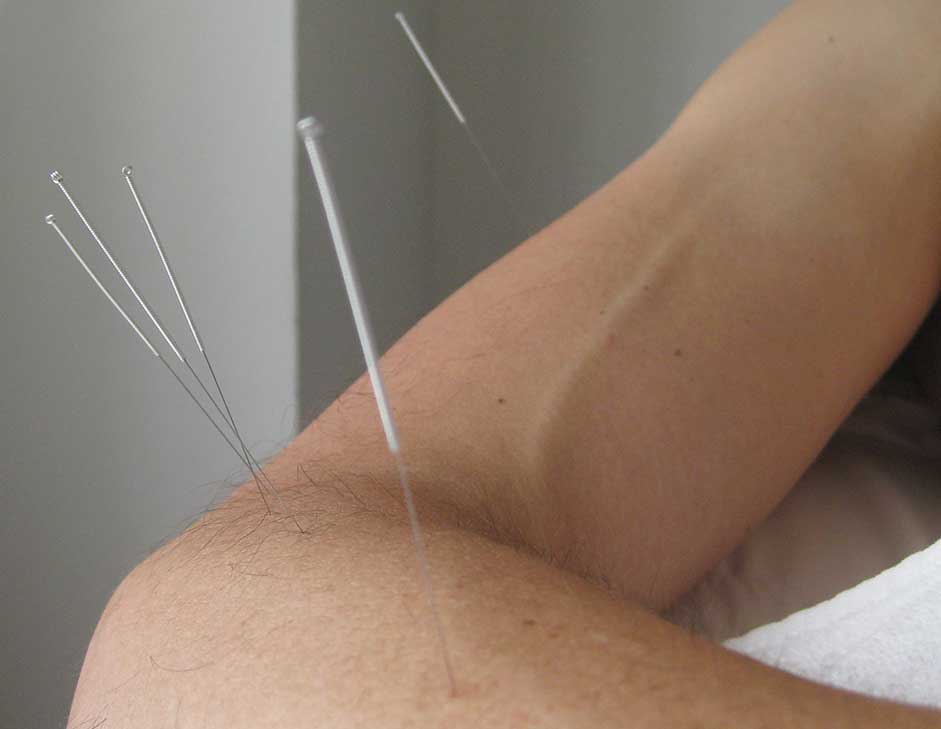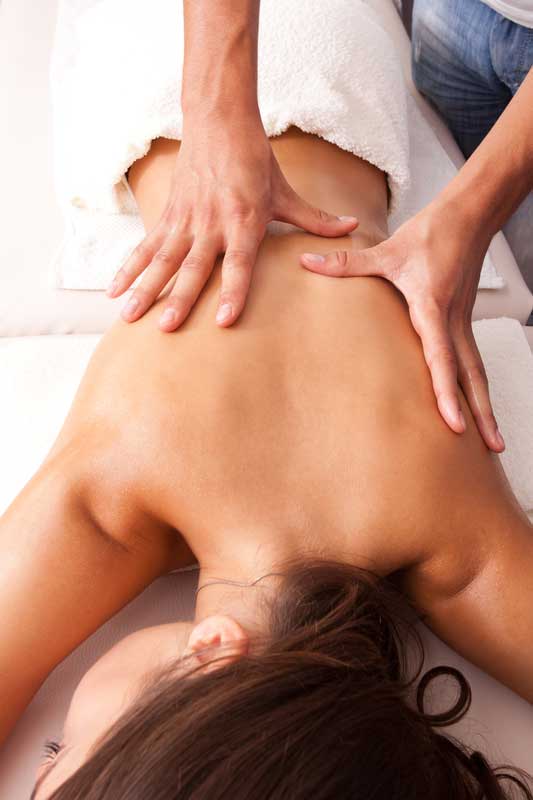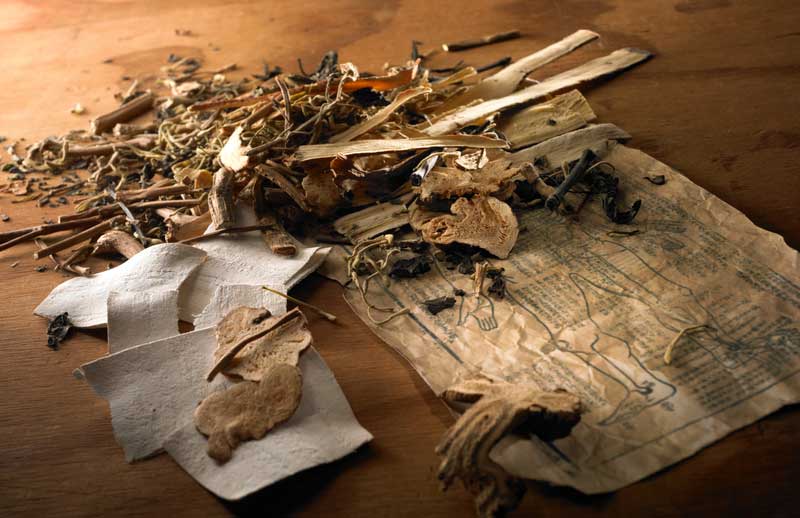
Acupuncture
Acupuncture is, as the name suggests, the puncturing of the skin with a superfine acupuncture needle on specific acu-points. These acupuncture points exist on specific pathways along the limbs and on the body. These pathways can almost be thought of as the neural pathways we have running all through our bodies. Acupuncture is like tapping into this bio-electricity that runs the nervous system, and stimulating it to reach the desired effect.
The body has an intuitive skill to try to heal itself and return to homeostasis (a state of balance and harmony). From time to time, the body’s systems become deficient or over-productive in a way that makes us ill. This can be through lifestyle factors, exposure, diet, stress or any of the other societal pressures and anxieties that face us today. Acupuncture looks at stimulating this bio-electricity (energy) at specific acupuncture points to encourage the body’s own natural healing process.
The history of acupuncture and Chinese medicine stretches back over thousands of years, during which time it was effectively used as the predominant sickness and well-being recovery system in China and the East.
The benefits of this remarkable Oriental history of healing is currently gaining more prominent legitimacy and acclaim within the Western concepts of medical care and treatment – an added advantage available to us all in relieving the health problems and stresses that we face in modern times.

How Acupuncture Can Help You
Our bodies are a complex myriad of nerves, muscle, bone and hormones. To tie it all together the body relies on neural impulses to instruct the different parts of our bodies on what to do.
The insertion of acupuncture needles into various acupuncture/pressure points has a subtle but noticeable effect. Acupuncture aims to help the body to regulate itself and these signals.
By regulating the body’s nerve impulses it is possible to reprogram muscle tension and stimulate organ function. Thus, the body is helped to return to a state of wellbeing and balance.

What Can Acupuncture Treat?
- Chronic and acute pain
- Lower back pain, upper back pain
- Sport injuries
- Sciatica
- Anxiety and stress
- Headaches
- Poor joint function
- Colds and flu
- Low immune system
- Digestive disorders
- Reduced neurological function
- Female reproductive and pregnancy support
- Low emotional resilience
- Bursitis
- Blood circulation

Remedial Massage
Remedial massage is a hands-on manual technique for the release of tension in specific tissue areas in the body. This includes muscles, ligaments, tendons and fascia.
Essentially, just like our counterparts in the animal world, many find it just feels good to be touched. Even when we hurt ourselves, we instinctively rub the area to soothe it and feel better.
Since ancient times, the restorative and healing properties of massage and touch have been known and practiced. Most cultures include some adaptation of therapeutic massage tradition that has been used for many centuries.
Remedial massage indicates a specific goal or effect is desired. Sickness or disharmony of the body can cause a shift in the body to painful state. Remedial massage can be used to remedy this by identifying the cause of the problem area and using specific manual techniques to release, stretch and return muscles to their proper length. Remedial massage is not necessarily hard or painful.
Massage can even have a beneficial effect on the immune system and organ function. Even psycho-spiritual emotional problems can be helped with massage. The body and mind are a linked unit. If your body feels good then your mind will also be affected to ‘feel good’ and more in balance.
Massage therapy is also great as a preventative treatment and health maintenance method. This is especially relevant for those who place great demands on their body. Heavy physical work and intense sport activity is invigorating but may lead to repetitive strain and injuries. Massage therapy has restorative and healing properties that will help keep the body stronger for longer. In fact, everyone can benefit from massage as the increased blood flow is invigorating and flexibility is enhanced.

Chinese Herbs
Traditional Chinese Medicine (TCM) therapy is a holistic approach to treating disease and disorders of the body’s various systems as well as for anxiety and stress-related issues.
The successful therapeutic use of Chinese herbal medicine has a continuous history of over 2,000 years and is one of the world’s oldest healing systems. Based on careful observation of a multitude of external signs and symptoms, treatments are designed to be specific to each individual’s health problems and needs.
Luke O’Toole provides the additional benefits of traditional Chinese herbal medicine therapy as an adjunct to the acupuncture and remedial massage treatments available at the Pain Relief and Wellness Clinic.
Consultations take up to 30 minutes and involve a full physiological and psychological analysis. Incorporating a holistic approach, the diagnosis and subsequent herbal remedy prescriptions are tailored to the specific and personal needs of the individual client.
Chinese herbal medicine therapy is used to treat:
- Stress and Anxiety
- Insomnia
- Male and Female Fertility
- IVF Support
- Pregnancy
- Fatigue
- Digestive Problems
- Pain Relief
We carry a limited range of Panaxea high quality granular herb capsules

What to Expect After Treatment
With acupuncture treatment, you will by lying in a calm, comfortable position on the treatment table, resting for between twenty and thirty minutes as the acupuncture points targeted are achieving their full effect. Some clients even fall asleep. When the treatment is complete, you may feel slightly light-headed. In some cases, a small pink area surrounding the insertion point of the acupuncture needle can be noticed; a normal reaction of the skin to penetration, but this usually disappears within an hour.
The beneficial effects of acupuncture are often felt immediately but the duration of the outcome depends on both the health problem being treated and the individual client.
After the massage session, you should feel relaxed; sometimes even a little light-headed or spacey. Just take a little time to let the body adjust before you head off out the door. Take care to drink a healthy amount of water to assist in the excretion of metabolic wastes and rehydrate the body. Massage therapy sessions are bit like exercise. The next day you may feel some muscular soreness and parts where you “didn’t know you had muscles”. This is normal and generally after 48 hours you will not be as sensitive and feel the full benefit of the massage.
Repetition is sometimes required to get a good lasting result from the massage therapy. If a complaint has been present for some time and considered chronic, it will most likely require multiple sessions to break the pattern. You should see incremental improvement changes after each session. For example, the affected area should decrease or the quality and level of pain/discomfort should reduce each time. Our treatments are assessed on a case-to-case basis and the number of sessions required depends how you respond.
We believe the client should be directly involved in the treatment plan process, where you can assess your progress. Once you have reached a level you are satisfied with, you can either continue on with a maintenance program or come back to the clinic when you feel the need for further treatment.
Take a little time to let your body adjust, and refresh with a drink of water before leaving.
If its your first time at the clinic please read your welcome letter for important information for your visit
The Pain Relief and Wellness welcome letter


